 In addition to our incredibly dedicated staff members, our Board of Directors is made up of passionate science, business, and civic leaders who provide their expertise and financial support to help guide our mission in the most strategic direction. With their commitment to protecting the Amazon Rainforest, we can help take action on the ground for both people and wildlife.
In addition to our incredibly dedicated staff members, our Board of Directors is made up of passionate science, business, and civic leaders who provide their expertise and financial support to help guide our mission in the most strategic direction. With their commitment to protecting the Amazon Rainforest, we can help take action on the ground for both people and wildlife.
 For Board Chair Jim Brumm, who joined Amazon Conservation’s Board of Directors in 2016, the great outdoors has always been a place of solace, especially for bird watching. He has traveled near and far to marvel at the vast array of bird species across the globe and was lucky enough to find the opportunity to become a Board Member through this passion. Jim is also deeply interested in and committed to conservation, Indigenous peoples, and community rights and development, and has served and continues to serve on a number of boards involved in bird conservation, Indigenous peoples’ rights, animal welfare, and conservation science.
For Board Chair Jim Brumm, who joined Amazon Conservation’s Board of Directors in 2016, the great outdoors has always been a place of solace, especially for bird watching. He has traveled near and far to marvel at the vast array of bird species across the globe and was lucky enough to find the opportunity to become a Board Member through this passion. Jim is also deeply interested in and committed to conservation, Indigenous peoples, and community rights and development, and has served and continues to serve on a number of boards involved in bird conservation, Indigenous peoples’ rights, animal welfare, and conservation science.
Read on to learn about Jim’s journey to taking an active role in protecting the Amazon rainforest!
_________________________________________________________________________________________________________________________________
Can you tell us a little about you?
I grew up in Fresno in Central California and lived there through college. I then went east to go to law school and after becoming a lawyer I worked in law firms in New York and Tokyo. In between New York and Tokyo, I traveled in a camping van through Europe, North Africa, and the Soviet Union for nine months and not only saw big cities and small towns but camped on beaches in southern Morocco, in the Sahara desert beyond the Atlas Mountains and north of the Arctic Circle. This journey gave me an appreciation of how we are all interconnected and how nature is one. I’ve lived in Japan for a total of five years and in Australia for one year and have traveled extensively for work and for environmental non-profit efforts I have had many opportunities to see how the world is changing and how the environment is being impacted. I spent most of my work career at a major Japanese trading company, Mitsubishi Corporation, and was their executive vice president and general counsel in the US. I was also on the board of directors in Japan. I have over the years and currently serve on a number of NGO boards, primarily bird and environmental conservation, and Indigenous people’s rights. I love being in the outdoors and exploring new places. I am not very good but I am a very enthusiastic birder and have birded on every continent except Antarctica.
What got you interested in environmental conservation?
When I was growing up in Central California, I often went camping and spent time in the Sierras and enjoyed nature. However, beyond a general interest in nature and in environmental conservation, I was not actively engaged until the company where I worked, Mitsubishi Corporation, became the target of an environmental campaign. I was put in charge of responding to the campaign. I realized I needed to understand the underlying issues involved and so I began to research the issues and the organizations involved in protecting the environment. Through that engagement in environmental issues, I came to recognize the threats to the environment and how important it was to protect the environment. Once I understood that, I knew I had to become involved in protecting the environment.
How did you initially learn about Amazon Conservation?
The first time I encountered Amazon Conservation was when co-founder Adrian Forsyth speaking at an American Bird Conservancy (ABC) event. Amazon Conservation sometimes used space from ABC so I sometimes met Adrian after that. Jeff Woodman, who was on the ABC board with me and on Amazon Conservation’s board of directors at the time, invited me and my wife Yuko to travel to Manu to see the work Amazon Conservation was doing. We stayed at the Conservación Amazónica-ACCA lodges at Wayqecha and Villa Carmen (now called Manu Biolodge), visited local villages and birded down the Manu road. I saw the beauty of Manu but also was made aware of the threats to its preservation. I also saw first-hand what Amazon Conservation and its sister organization Conservación Amazónica-ACCA were doing to protect the Amazon and knew I wanted to be involved.
As a Board Member, what are you most impressed/proud of from Amazon Conservation?
I am continually impressed with and awed by the enthusiasm, dedication and commitment of the staff and the board members of Amazon Conservation and its two sister organizations in Peru and Bolivia. These are people who are deeply committed to saving the Amazon and who have made sacrifices for the sake of the environment and for all of us. The staff are very talented and have the skills and expertise needed to accomplish what they are committed doing and are great collaborators with each other and with the people who live in the Amazon and the governments, bilateral and multilateral institutions and other NGOs engaged in protecting the Amazon. They are effectively carrying out and building on the vision and accomplishments of Amazon Conservation’s co-founders, Adrian Forsyth and Enrique Ortiz.
What have you learned from being a Board Member?
I have come to have a much deeper understanding of the importance of the Amazon, its threats and how best to preserve it and the livelihoods of the people who live there. I have been able to see firsthand how a shared vision among the staff and board of Amazon Conservation and the staff and board of Amazon Conservation’s two sister organizations (Conservación Amazónica-ACCA in Peru and Conservación Amazónica-ACEAA in Bolivia) executed by dedicated staff can effectively work on the ground to protect the Amazon. I have also experienced the joy of working with board members engaged in a common mission and learning from them in so many ways.
Why do you think it is important to protect the Amazon rainforest?
As the world’s largest rainforest, failure to protect it will have disastrous consequences for the world’s climate. If we don’t protect it, not only will the people who live in the Amazon and who are dependent on it remaining sustainable be harmed, but also the world at large will suffer serious consequences. Not only does the Amazon encompass the single largest remaining tropical rainforest in the world, it also houses at least 10% of the world’s known biodiversity, including endemic and endangered flora and fauna, and its river accounts for 15-16% of the world’s total river discharge into the oceans. The loss of this biodiversity would have catastrophic consequences beyond our imagination.
What would you say to other environmentally-conscious people who want to make a difference in the Amazon and help fight climate change?
Contribute financially to the organizations engaged in protecting the Amazon, get involved as volunteers and as board members of those organizations. Become politically active in supporting legislation and government funding for the Amazon. Visit the Amazon and see for yourself the beauty of the Amazon and deepen your understanding of the threats and challenges to the Amazon and appreciate how the efforts of organizations like Amazon Conservation are making a difference.
Do you have anything else to add that you’d like people to know?
I find working with the people at Amazon Conservation, their sister organizations, and their other partners one of the most rewarding endeavors of my life.

 Our newest MAAP report,
Our newest MAAP report, 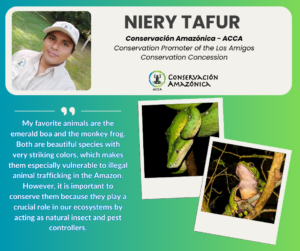

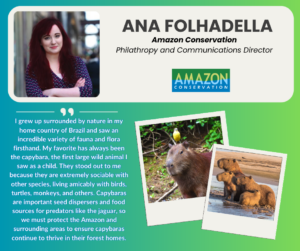
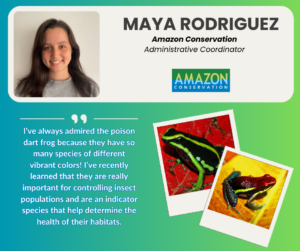


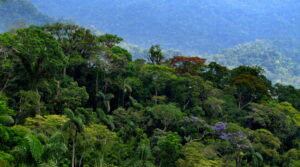 With over 1,400 member organizations and and a network of over 16,000 scientists, the IUCN drives conservation among organizations across multi-national levels to bring the necessary, knowledge, tools, and resources to progress toward safeguarding the natural world. Since its creation in 1948, it has become the world’s most prevalent environmental network and continues to build on human and economic development to address key conservation areas such as species survival, environmental law, protected areas, social and economic policy, ecosystem management, and education and communication. Each organization in the IUCN plays a unique role in a democratic process, where they can contribute to discussions, agendas, and resolutions that develop the foundation for global conservation. This system has helped to establish significant environmental agreements such as the
With over 1,400 member organizations and and a network of over 16,000 scientists, the IUCN drives conservation among organizations across multi-national levels to bring the necessary, knowledge, tools, and resources to progress toward safeguarding the natural world. Since its creation in 1948, it has become the world’s most prevalent environmental network and continues to build on human and economic development to address key conservation areas such as species survival, environmental law, protected areas, social and economic policy, ecosystem management, and education and communication. Each organization in the IUCN plays a unique role in a democratic process, where they can contribute to discussions, agendas, and resolutions that develop the foundation for global conservation. This system has helped to establish significant environmental agreements such as the 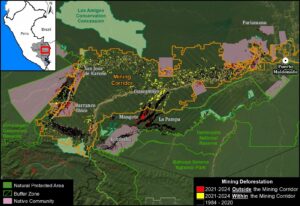 Thanks to support from USAID (United States Agency for International Development) and NORAD (Norwegian Agency for Development Cooperation), we’ve been able to publish a series of reports on the dynamic situation of gold mining in the southern Peruvian Amazon over the past several years.
Thanks to support from USAID (United States Agency for International Development) and NORAD (Norwegian Agency for Development Cooperation), we’ve been able to publish a series of reports on the dynamic situation of gold mining in the southern Peruvian Amazon over the past several years.


